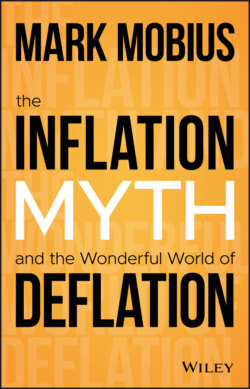Читать книгу The Inflation Myth and the Wonderful World of Deflation - Mark Mobius - Страница 18
Rome's Debasement
ОглавлениеOne of the most sustained programs of coin debasement took place during the Roman Empire. Following on from Augustus’ original minting of Roman coins in the form of gold Aureus and silver Denarius, a succession of subsequent emperors took turns in debasing the currency until it was all but worthless. Nero began this process in the first century AD, reducing the silver content and increasing the base metal content in the coins to 10%. Later in the same century, Emperor Trajan reduced the amount of silver in the Denarius still further. The process continued until, during the reign of Antoninianus, the amount of silver in the Denarius was down to just 5%. A century later under Gallienus, the silver content was further reduced, with the Denarius containing one five‐thousandth of the silver from Augustus’ reign. Unable to reduce the silver content in any meaningful way still further, Gallienus’ successor Aurelian increased the face value of new coins two and a half times. The result of this debasement was twofold. First, people kept hold of earlier coins, especially gold ones, as they knew the value of their replacements would decrease. Second, the Roman Empire suffered from sharp inflation. Just as Wang Mang's coin debasement had led to a rise in rice prices, so the Roman debasement saw a rise in wheat prices: rising 32 times in Egypt, for example, between the first and third century, then 44 times in the next 30 years and at an annual rate of 24% in the subsequent decade. Real wages fell, with soldiers increasingly paid in food and clothes, rather than cash. While not the only contributing factor, economic mismanagement was one of many reasons behind the inevitable collapse of the Roman Empire.
